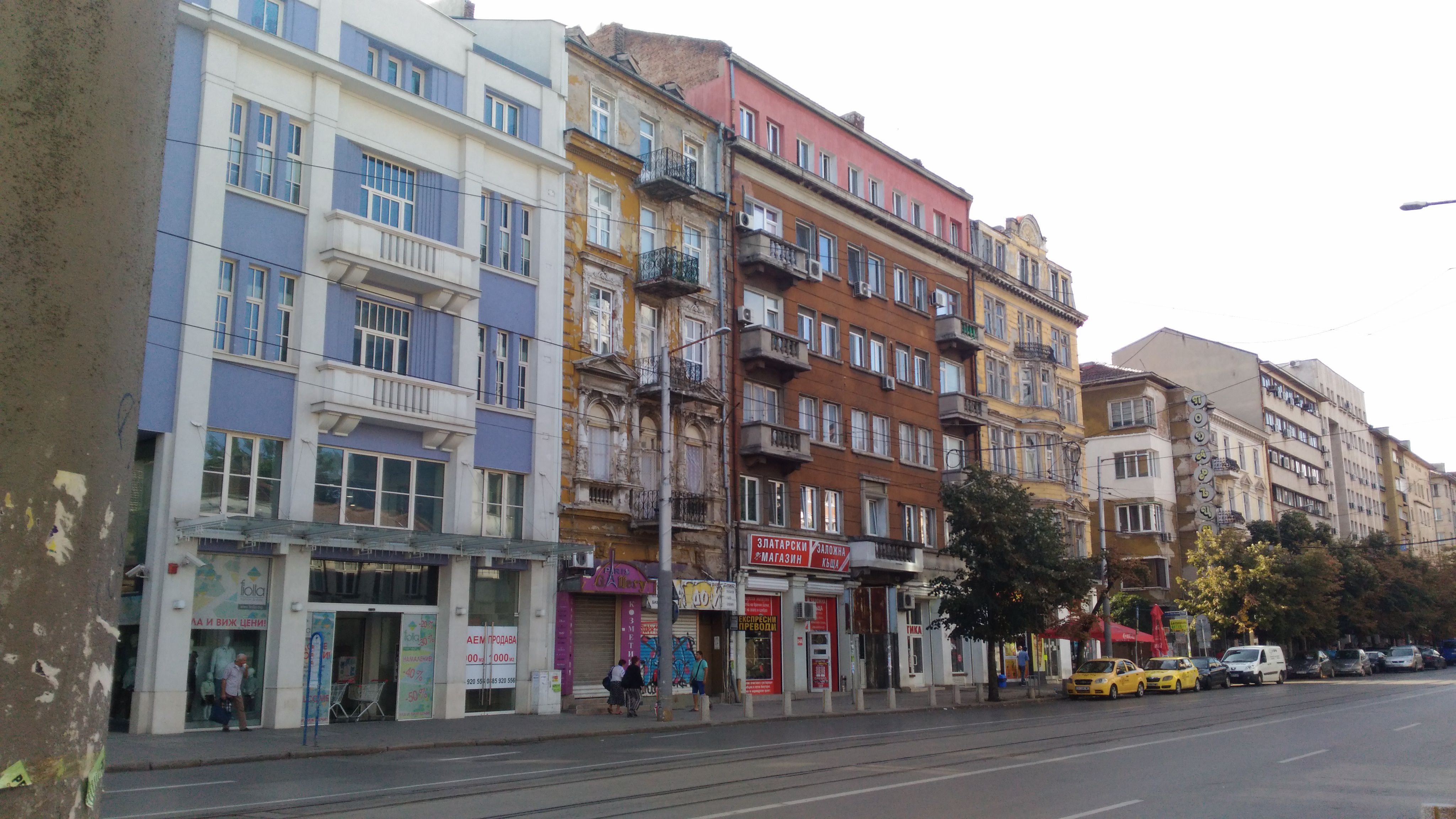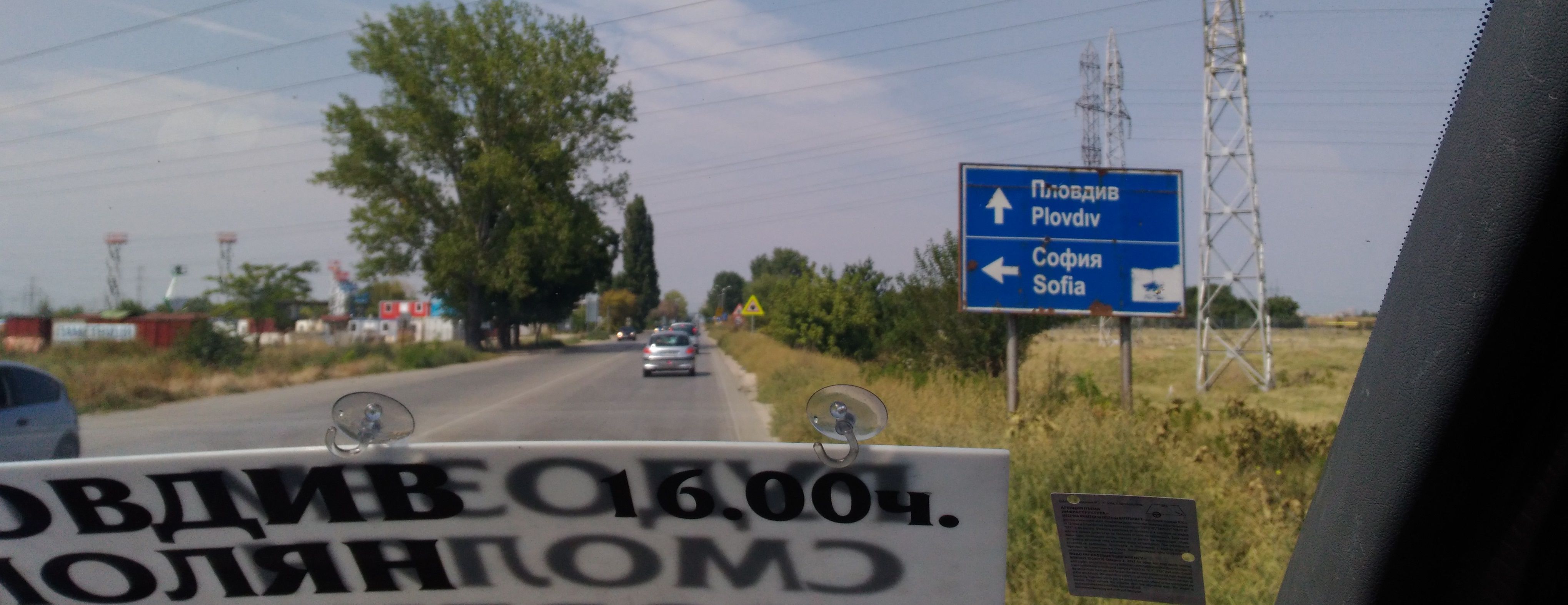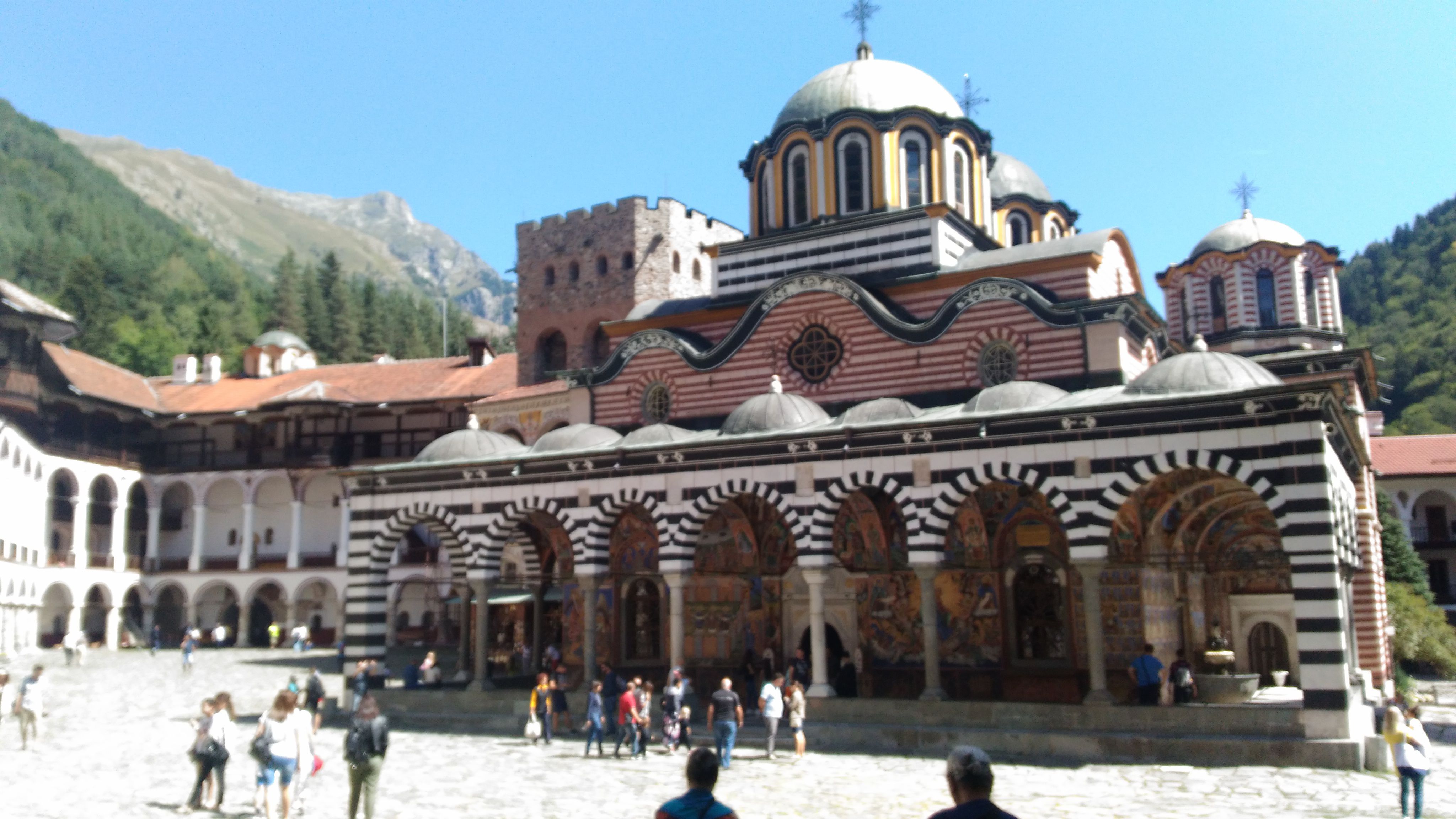
How to get to Rilski Monastery in Bulgaria?
Son güncelleme tarihi: 15 Eylül 2019
Yazının Türkçe versiyonu için burayı tıklayın.
Sofia, the capital of Bulgaria, might not be the city where you can see tons of different attractions. So, during a visit which covers at least several days, you might want to look for other options close to the boundries of the capital. In that case, the historical Rilski (Rila) Monastery (member of the prestigious UNESCO World Heritage List) is one option that you can consider. But the transportation is liable to prove challenging, if you choose not to take the easiest way. In this post, I will try to explain all of the options that I have found -and personally experienced. Also I will tell you about the monastery itself a little.
Rilski is located at about 110 km east of Sofia. The aforementioned easiest way is taking the daily direct bus from Sofia’s Western Bus Station, Ovcha Kupel. There is one daily bus (actually a midibus) from Sofia at 10.20 in the morning, and the return bus leaves from the monastery at 3 pm in the afternoon. Tram #5 goes to Ovcha Kupel from city center and tram ticket costs 1.60 BGN (as of September 2017). I knew that one way travel already takes more than 2 hours, in order to spend more time around the monastery, I searched some alternative ways. Eventually it proved to be a wrong choice to me, but I had no idea about that back in the time. So I wanted to try some other alternatives, I was ready to pay a little more to have maybe an extra hour around.
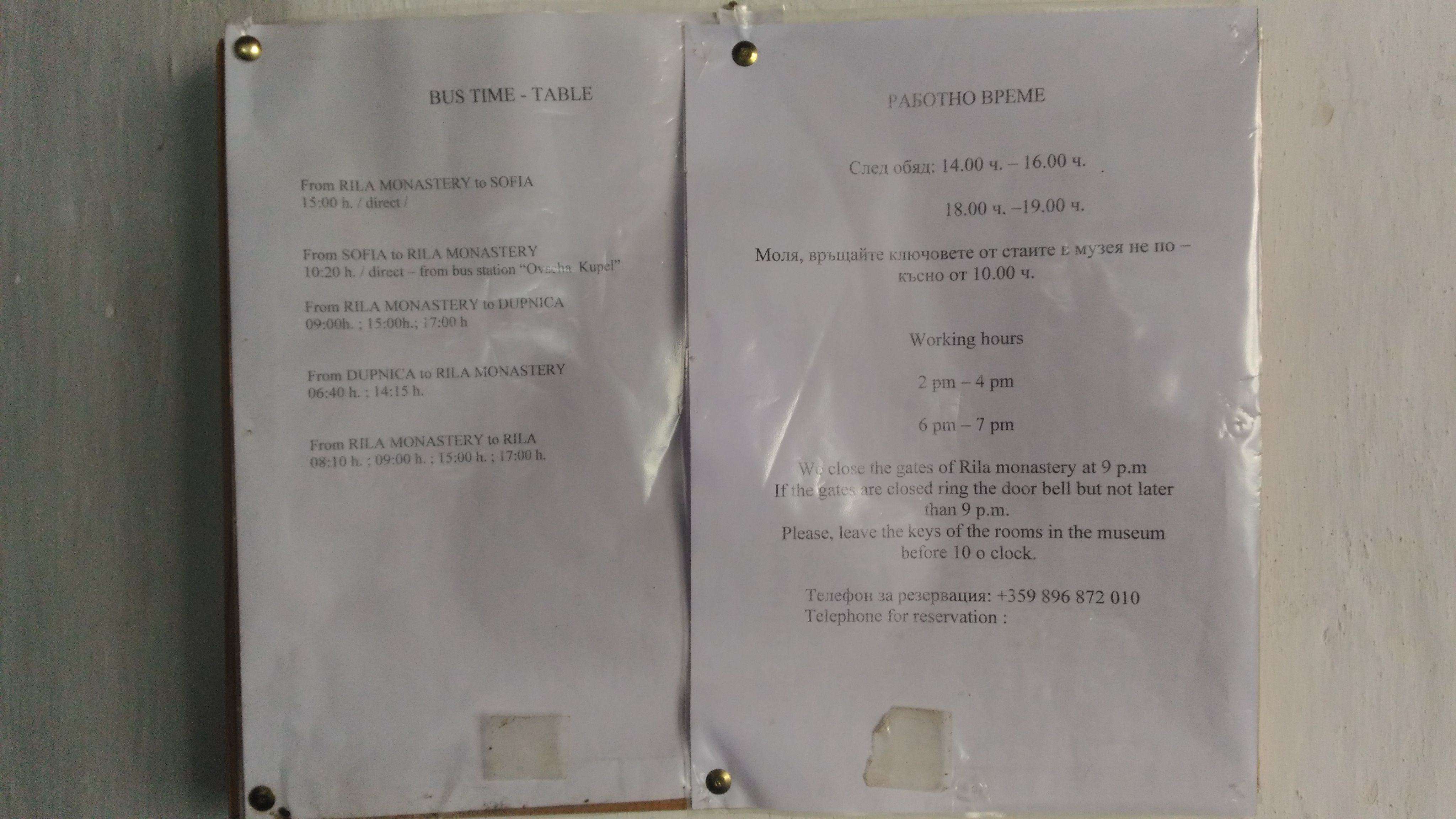
Transportation to Rilski Monastery
In my research, I had found out that the most towns near Rila were Blagoevgrad and Dupnitsa. Other travelers’ blogs were stating that it was possible to get a bus or taxi from either of them to Rila town (not the monastery), with Blagoevgrad having a little more buses. I decided to go to Blagoevgrad and booked a train ticket which leaves Sofia Central Station at 7.20. We had arrived in Blagoevgrad after 2.5 hours of journey. Town’s bus station was about 100 meters from the train station, on the right hand side after you exit there. Next bus to Rila was at 11 o’clock, so I had to wait. I paid 2 BGN for the bus and after approximately 35 minutes of travel, we were in Rila. I was planning to recruit a couple of other toursits to take a taxi from there to the monastery and I targeted a French-speaking couple in the bus. But unfortunately I learnt that they have other plans before visiting the monastery. I was kinda stranded, with the next bus from Rila to monastery (which also costs 2 BGN) was one hour away from departure. I did all of these stuff to save a little time, it wasn’t about the money, so I felt I had to go all the way alone. I asked the bus driver if there is a taxi that I could take, he looked around a little bit, and waved at a yellow car which happened to be approaching to us as we were talking. The taxi driver (it wasn’t officially a taxi, just a local guy who uses his private vehicle as a taxi for the stranded tourists like me). He wanted 20 BGN, I had nothing to do but accept it. After another 30 minutes of travel, I was finally at the Rilski monastery. I have to admit that the route was really scenic and the driver’s AC-DC CD helped me a little to cheer up after my obvious failure. My total saving was about 30 minutes, but I was going to understand soon that it was redundant.
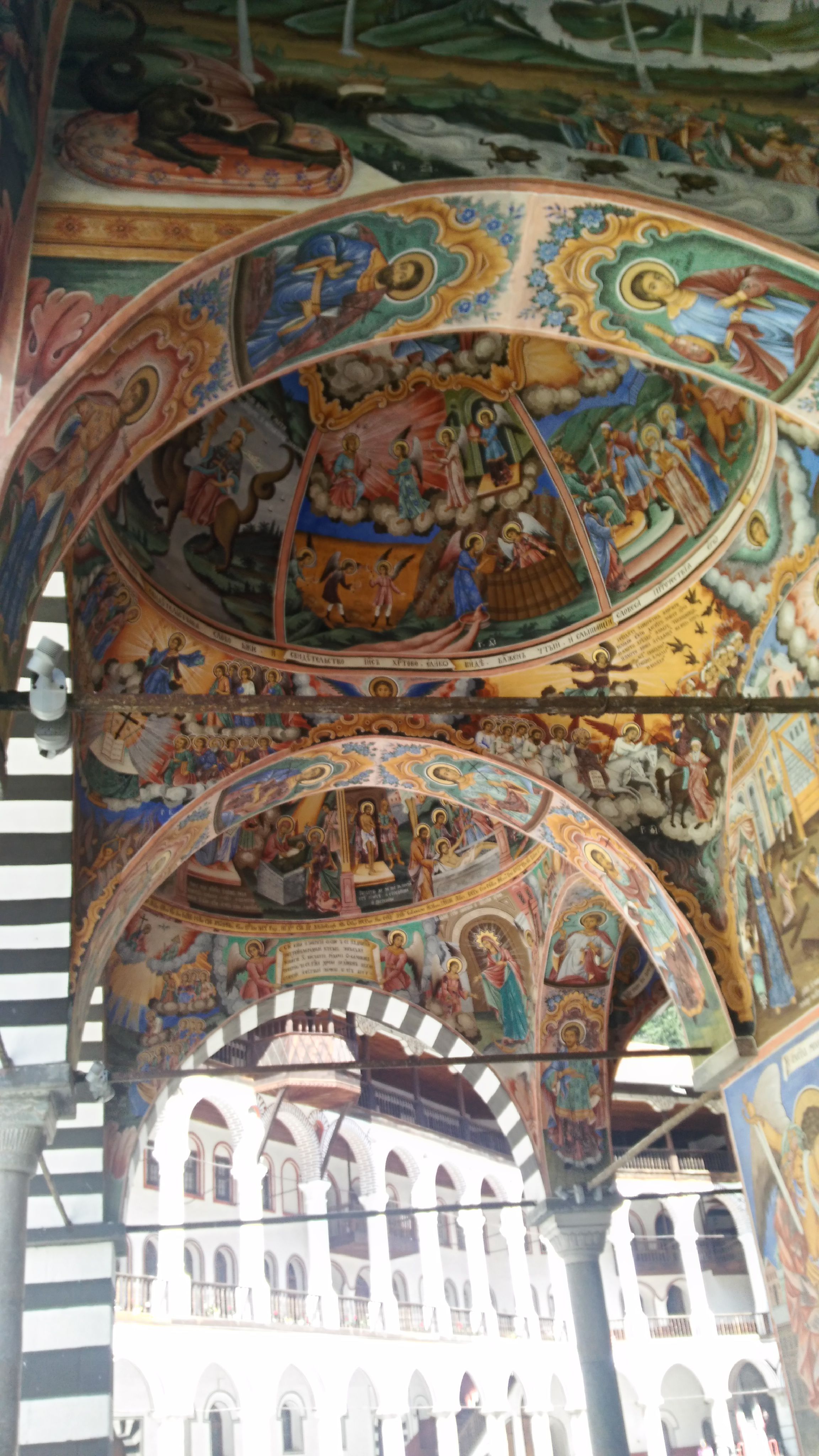
Rilski Monastery is located in the middle of a marvellous nature, with a river on one side and a hill covered with a great forest on another. While there was nothing around, about 1000 years ago, St. Ivan (John of Rila) went in the seclusion. He had spent many years in the forest with almost no outside sources to maintain a life. His followers had built this monastery in his honour. Although a huge fire had almost completely destroyed the monastery, it was built again. The monastery itself really worths visiting. It was a small one, but ceiling decorations, paintings and the interior design are mainly original. This monastery complex is surrounded with huge walls. It is also possible to spend a night in the monastery, just like a hotel. At 9 pm, the gates of the complex are being closed, after that time no one can enter or leave, so you would have the chance spend the night with the monks, which surely sounds like a worthy experience. The entrance is free to the monastery, monastery’s museum has a 8 BGN admission fee. In the museum, some religious and memorial objects are being displayed.
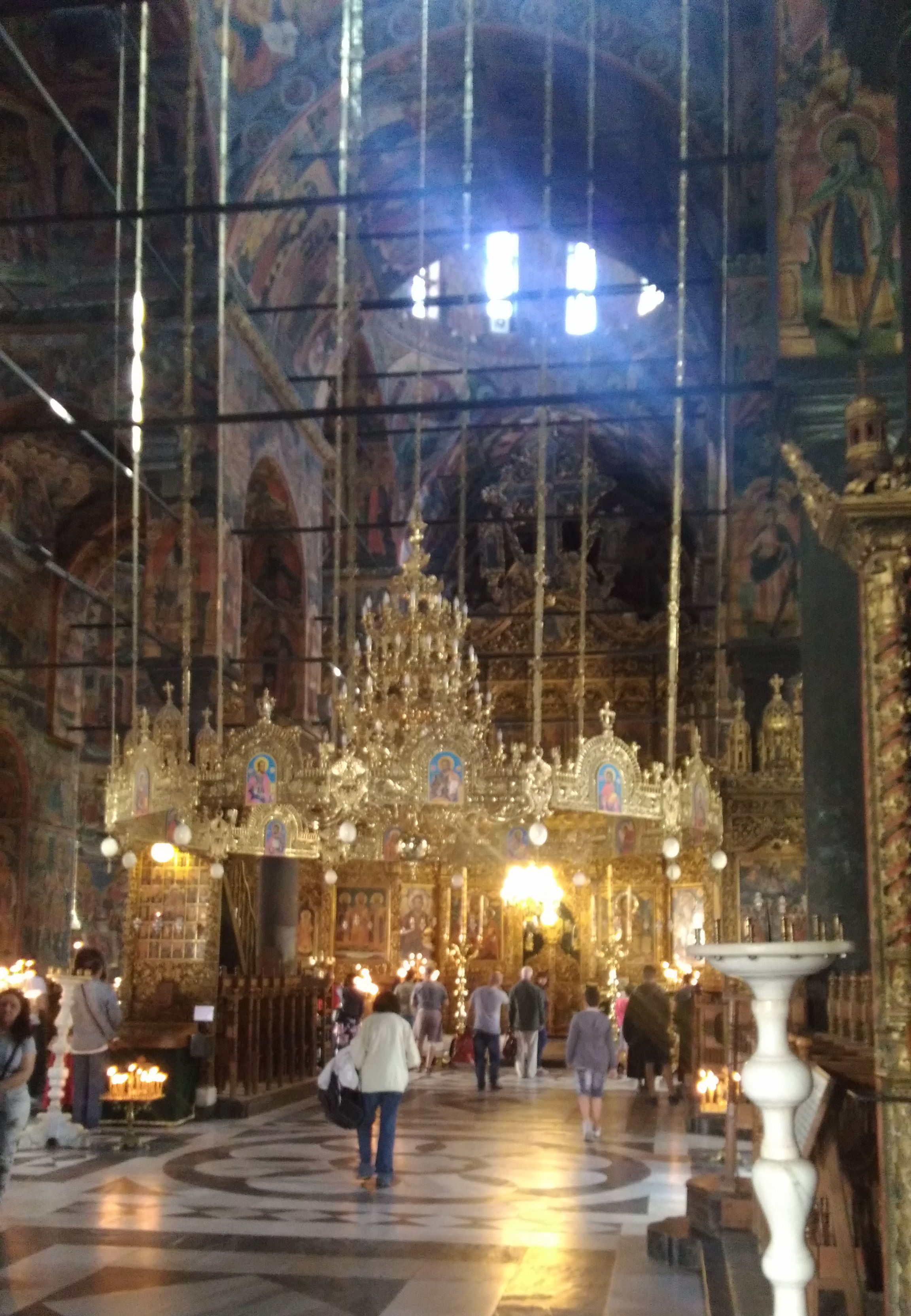
My mistake was to presume that visiting the whole would take more than 2 hours, which was clearly not the case. I had bothered that much for virtually nothing more. It was enough for a regular tourist like me. As I told you, there was huge forest around, so I decided to spend my remaining time by trying to climb the hill. But I chose not walk on the tourists’ path, I tried to climb the steep hill between the trees, which was another wrong choice. Shortly after, I had to accept that there was no chance to move forward, going down was also tough, much tougher than climbing. I basically skidded until I step on a flat surface. That much of mistakes were enough, I waited until the bus to Sofia departed, which was at 3 pm as I had mentioned earlier. I paid that 11 BGN for the return ticket. After 2 and an half hours, we were back in Sofia’s Ovcha Kupel bus station.
Please ignore some of the ‘negative’ things I mentioned earlier. None of them is about the monastery itself. Rilski Monastery is a really precious piece for visiting. So I would politely request you to take into account the monastery, if you would consider getting out of Sofia. One last reminder: Don’t get confused with the names. The monastery is called ‘Rilski Manastir’ in Bulgarian. The little Rila town, which is probably named after the mountain series which also houses the monastery, is somewhere else, just another stop en route to the real destination.
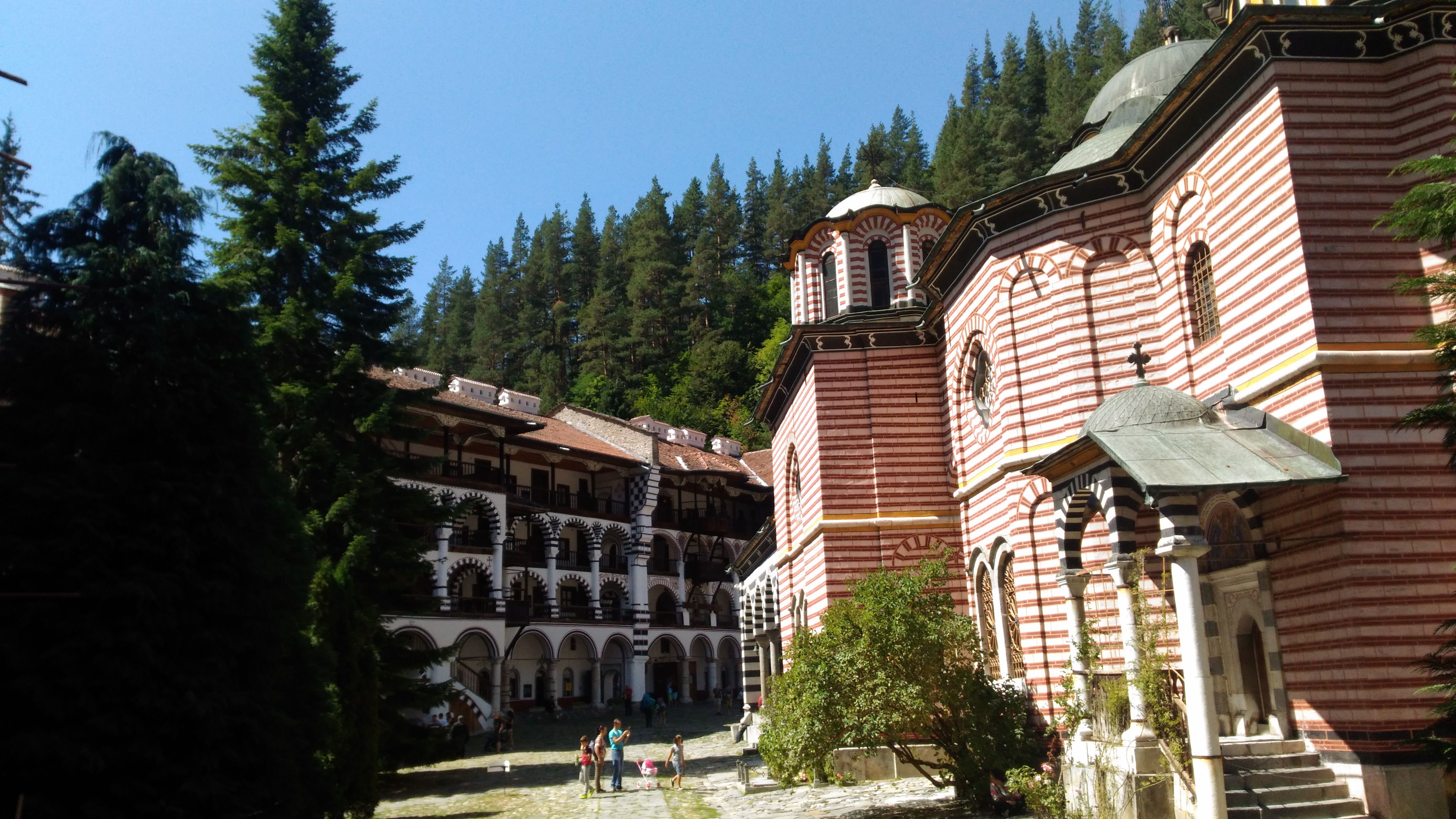
P.S. Yazının Türkçesi’ne Rilski Manastırı sayfasından ulaşılabilir.

